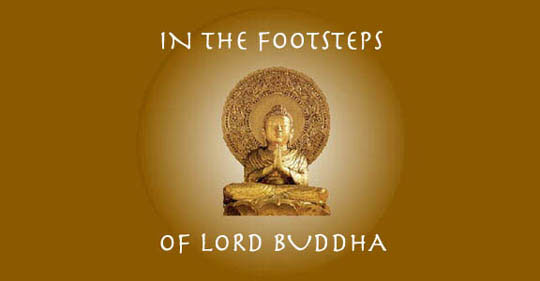

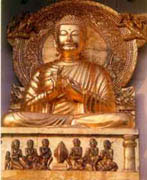 On our
amazing pilgrimage to the sites in India and Nepal sacred to Lord
Buddha, we walk "In the Footsteps of Lord Buddha." Some highlights
of our awe-inspiring tour:
On our
amazing pilgrimage to the sites in India and Nepal sacred to Lord
Buddha, we walk "In the Footsteps of Lord Buddha." Some highlights
of our awe-inspiring tour:
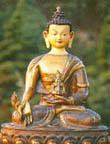 The
famous historical person known as Buddha was also called the
Tathagata, which means "the one who has come thus," and Shakyamuni,
which means "the sage of the Shakya tribe."
The
famous historical person known as Buddha was also called the
Tathagata, which means "the one who has come thus," and Shakyamuni,
which means "the sage of the Shakya tribe."
Siddhartha was born in the town of Kapilavastu (located in today's Nepal). His parents were King Shuddhodana and Queen Maya, who ruled the Sakyas. One night, Queen Maya dreamed that an elephant with six tusks, carrying a lotus flower in its trunk, touched her right side. At that moment her son was conceived. Brahmins came and interpreted the dream. The child would be either the greatest king in the world or the greatest ascetic. The future child would be named Siddhartha, which means "he whose aim is accomplished."
 When
Siddhartha was about 20, when he married Yasodhara, daughter of one
of the King's ministers, and one year later they had a child named
Rahul.
When
Siddhartha was about 20, when he married Yasodhara, daughter of one
of the King's ministers, and one year later they had a child named
Rahul.
At the age of 29, Siddhartha asked his charioteer, Channa, to take him out of the city as he was not allowed to go out of the palace as the King was afraid as the astrologer had predicted the Prince to become an ascetic. During two trips, Siddhartha saw the "Four Sights" that changed his life. On the first trip, he saw old age, sickness, and death. The second trip, he saw a wandering holy man, an ascetic, with no possessions. Siddhartha started questioning the holy man and the man told him that he wanted to win salvation. That night, Siddhartha silently kissed his sleeping wife and son, and ordered Channa to drive him out to the forest. In the forest, Siddhartha took off his sword, and cut off his hair and beard. He then took off all his princely garments and put on a yellow robe of a holy man. He then ordered Chianna to take his possessions back to the King.
Wandering
through the northeastern India, Siddharth sought out holy men, and
learned about Samsiara (reincarnation), Karma, and Moksha. One day,
Siddhartha realised that his years of penance only weakened  his body,
and that he could not continue to meditate properly. When he
stepped into the river to bathe, he was too weak to get out, and it
is believed that the trees lowered their branches to help
him.
his body,
and that he could not continue to meditate properly. When he
stepped into the river to bathe, he was too weak to get out, and it
is believed that the trees lowered their branches to help
him.
At that instant, a milk-maid named Nandabala came and offered a
bowl of milk and rice, which Siddhartha accepted.
 Refreshed
by the meal, Siddhartha sat down under a fig tree (often refeired
to as the Bo tree, or Tree of Enlightenment) and resolved to find
out an answer to life and suffering. While meditating, Mara (an
evil god) sent his three sons and daughters to tempt Siddhartha
with thirst, lust, and distractions of pleasure but Siddhartha
stayed unswayed in deep meditation, and recalled all his previous
rebirths, gained knowledge of the cycle of births and deaths, and
with certainty, cast off the ignorance and passion of his ego which
bound him to the world. Thereby, Siddhartha had attained
enlightenment and became the Buddha (enlightened
one).
Refreshed
by the meal, Siddhartha sat down under a fig tree (often refeired
to as the Bo tree, or Tree of Enlightenment) and resolved to find
out an answer to life and suffering. While meditating, Mara (an
evil god) sent his three sons and daughters to tempt Siddhartha
with thirst, lust, and distractions of pleasure but Siddhartha
stayed unswayed in deep meditation, and recalled all his previous
rebirths, gained knowledge of the cycle of births and deaths, and
with certainty, cast off the ignorance and passion of his ego which
bound him to the world. Thereby, Siddhartha had attained
enlightenment and became the Buddha (enlightened
one).
Buddha went to
the city of Sarnath. There he began teaching holy men what he had
learned. This preaching was called his Deer Park Sermon, or
"Setting in Motion the Wheel of Doctrine." Siddihartha revealed
that he had become the Buddha, and described the pleasure that he
had first known as a prince, and the life of severe asceticism that
he had practiced. Neither of these was the true  path to
Nirvana. The true path was the Middle Way, which keeps aloof from
both extremes. At an age of about eighty, a blacksmith named
Cuanda fed buddha with a meal that caused him to become
ill.
path to
Nirvana. The true path was the Middle Way, which keeps aloof from
both extremes. At an age of about eighty, a blacksmith named
Cuanda fed buddha with a meal that caused him to become
ill.
Buddha even then forced himself to travel to Kushinagara, and laid down on his right side to rest in a grove of shala trees. It is said that as a crowd of followers gathered, the trees sprouted blossoms and showered them on Buddha. Buddha told Ananda, "I am old and my journey is near its end. My body is like a worn-out cart held together only by the help of leather straps." Three times, Buddha asked the people if they had any questions, but they all remained silent. Finally Buddha said, "Everything that has been created is subject to decay and death. Everything is transitory. Work out your own salvation with diligence. After passing through several states of meditation, the Buddha died, reaching Parinirvana (the cessation of perception and sensation).
|
 Susan Shumsky of Divine Travels is a member of Travel Service Network, Inc. (TSN). Professional industry affiliations include:  
   
|
|
||
|
New Delhi: The new capital designed by Sir Edward Lutyens. An interesting drive in the one passing through the impressive Rajpath from the World War I memorial arch, the India Gate towards the Presidential Palace. Visit Humayun's Tomb built in 1565 AD, Safdarjung's Tomb, the Qutab Minar, 72 meters high and the most curious antique, the uncorroded Iron Pillar, which dates back to the 4th century AD. 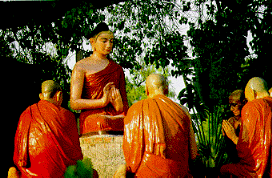
|
|||
|
Agra is famous as being home to one of the Seven Wonders of the World the "TAJ MAHAL". The architectural splendor of the mausoleums, the fort and the palaces is a vivid reminder of the opulence of the legendary Mughal Empire, of which Agra was the capital in the 16th and early 17th centuries. While its significance as a political center ended with the transfer of the capital to Delhi in 1634 by Shah Jahan, its architectural wealth has secured its place on the international map. Agra is known for its superb inlay work on the marble and soapstone by craftsmen who are descendants of those who worked under the Mughals. The city is also famous for its carpets, gold thread embroidery and leather shoes. 
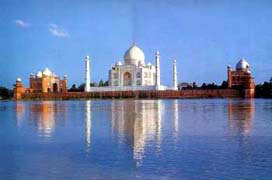 
|
|||
|
|
Sarnath: After attaining enlightenment, Buddha came to Sarnath, where he preached his first sermon. In the sylvan surroundings of a deer park, he initiated his first five disciples into the Buddhist monkhood. Here began one of the greatest religions of the world. Emperor Ashoka erected a magnificent stupa here. Forgotten for centuries, Sarnath was excavated by British archaeologists in 1836. |
||
|
At sunrise you'll board a small boat for a cruise on the Holy River Ganges. You can photograph riverside temples & ghats in a rich golden light. All devote Hindus must make the Varanasi pilgrimage, bathing in the Ganges as a rite of purification.
After breakfast, leave for Bodhgaya by surface (265 Km/08 Hrs). Reach Bodhgaya and transfer to hotel. Dinner & overnight at hotel.
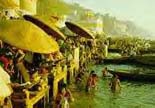
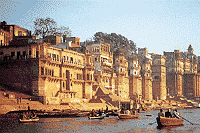
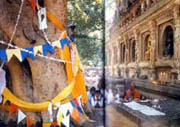
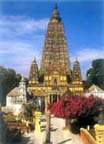
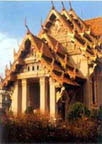
|
|||
|
Rajgir the ancient capital of Magadha kings. The Buddha often visited Rajagriha to retreat at the Jivkamaravana monastery, preaching and meditating on the Gridhakuta Hill. The disciples of the Buddha built many structures here. Rajgir is also sacred to Jains as Lord Mahavira studied and meditated here. The first Buddhist Council was held here after the Buddha's nirvana. 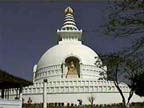 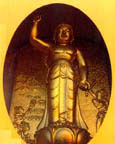 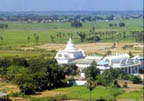
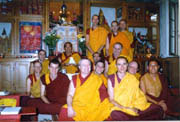 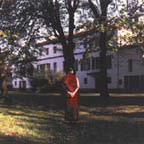 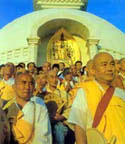
 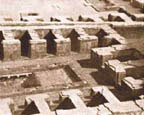 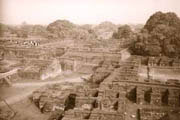
|
|||
|
|
General Cunningham and A.C. Carlyl brought this ancient site to light. Only after this excavation of the site in 1861, its antiquity was established for the first time. After this, between 1904 and 1912, several excavations conducted by the Archaeological
Survey of India at Kushinagar confirmed its ancient
When he reached his eighty-first year, Buddha gave his last major teaching--the subject was the thirty-seven wings of enlightenment--and left Vulture's Peak to journey north. It is when he crossed the Ganges for the last time at place where Patna now stands and came to the village of Beluva where Buddha was taken ill but he suppressed the sickness and continued to Vaisali. It was also the principal location of the third turning of the wheel of Dharma.
Coming to Pava, the blacksmith's son Kunda offered him a meal which included meat. It is said that all the Buddha's of this world eat a meal containing meat on the eve of their passing away. Buddha accepted, but directed that no one else should
partake of the food. Later it was learned that the meat was bad. Buddha had already
Prajapathi Gothmi, the aunt of the Buddha Shaved her hair, doomed the saffron robes arrived at the great hall in the company of five hundred Sakyan ladies and pleaded to grant ordination. The Buddha granted permission and decreed eight rules which
should be honored, respected, esteemed and revered and should be transgressed for life. Later the Buddha delivered further admonitions and Pajapathi Gothami attained satisfaction. Yasodhara, Janapada Kalyani, Nanda,
It was at Vaisali that the miracle at the nature of offering of a bowlful of honey to the Buddha by the monkeys took place. It was here that Lichchhavis erected a Stupa over their share of the relics of the Buddha after Parinirvana of the latter. Buddha received the gift of the Mangoo grove from the courtesan Amarpali at Vaisali.
Once Vaisali was a trade center and a large number of clay seals bearing the names of bankers and traders were found here. Among other shrines, there is a small tank, known as Rama Kunda, which has been identified as a tank dug by the monkeys for the use of the Buddha. Vaisali, the capital of the Lichchhavi kings was the birth place of Nigantanathaputra, the 24th Jain ascetic according to Jainism. Vaisali is connected with the life story of Buddha mainly because it was that he proclaimed that his Parinirvana would take place with in a short time. During the time of the Buddha there was a plague that ravaged the Vaisali city. The Buddha then preached the Ratana Sutta. 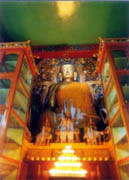 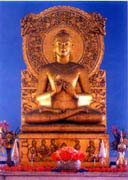
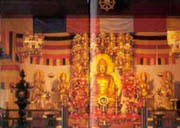
|
||
|
Lumbini: The birth place of Lord Buddha. Lumbini is situated at the foothills of the Himalayas in modern Nepal. The holy site is being developed with international support as the supreme Buddhist pilgrimage and a symbol of world peace. The shrines and monastries that many countries have built or are still building reflect the architectural traditions of those countries, and thus giving Lumbini an international feel with a message of universal love and brotherhood. 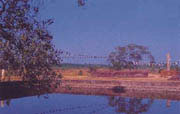 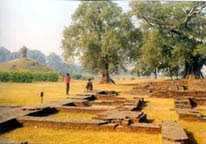
|
|||
|
Hotel: Balrampur Palace Or Lotus Nikko, Sravasti (Meals - Breakfast & Dinner) |
|||
|
|
|||
|
After breakfast, leave for Lucknow by surface. Reach Lucknow in the evening and transfer to hotel. Dinner & overnight at hotel. |
|||
|
After breakfast, half day sightseeing of Lucknow. Afterwards, transfer to Railway Station to catch Shatabdi Express for Delhi at 15.35 Hrs. Reach Delhi at 21.45 Hrs. and transfer to IGI Airport & tour terminates. |
|||
|
|
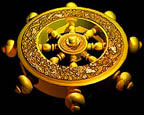
| CLICK HERE FOR INDIA TOUR FEES !!! |
| CLICK HERE TO INQUIRE OR REGISTER NOW ON OUR SECURE SERVER !!! |
| INDIA TRAVEL AND VISA INFORMATION |
| CONTACT US: | |
| Divine Travels 818 SW 3rd Ave. #1505 Portland, OR 97204 |
|
CLICK ON LINKS TO OUR TOURS: |
DIVINE TRAVELS HOME
SPIRITUAL CRUISES
SPIRITUAL RETREATS
SACRED INDIA TOURS
SACRED EGYPT TOURS
SACRED PERU TOURS
SACRED BALI TOURS
SACRED GREECE TOURS
SACRED MEXICO TOURS
JOIN OUR MAILING LIST
DIVINE REVELATION HOME
DIVINE TRAVELS HOMECLICK HERE FOR INDIA TOUR FEES
CLICK HERE NOW to Inquire or Register for an India Tour
|
IMPORTANT NOTE: |
Our Tours are
not affiliated with any particular spiritual path. All are
welcome!
SITE MAP DIVINE TRAVELS: HOME PAGE for Divine Travels | SPIRITUAL RETREATS IN USA | SACRED INDIA TOURS | SACRED EGYPT TOURS | SACRED PERU TOURS | SACRED BALI TOURS | SACRED GREECE TOURS | SACRED MEXICO TOURS | SPIRITUAL CRUISES | Join Our Travel Mailing List | ![]() |
|
CLICK HERE NOW to Inquire or Register for an India Tour